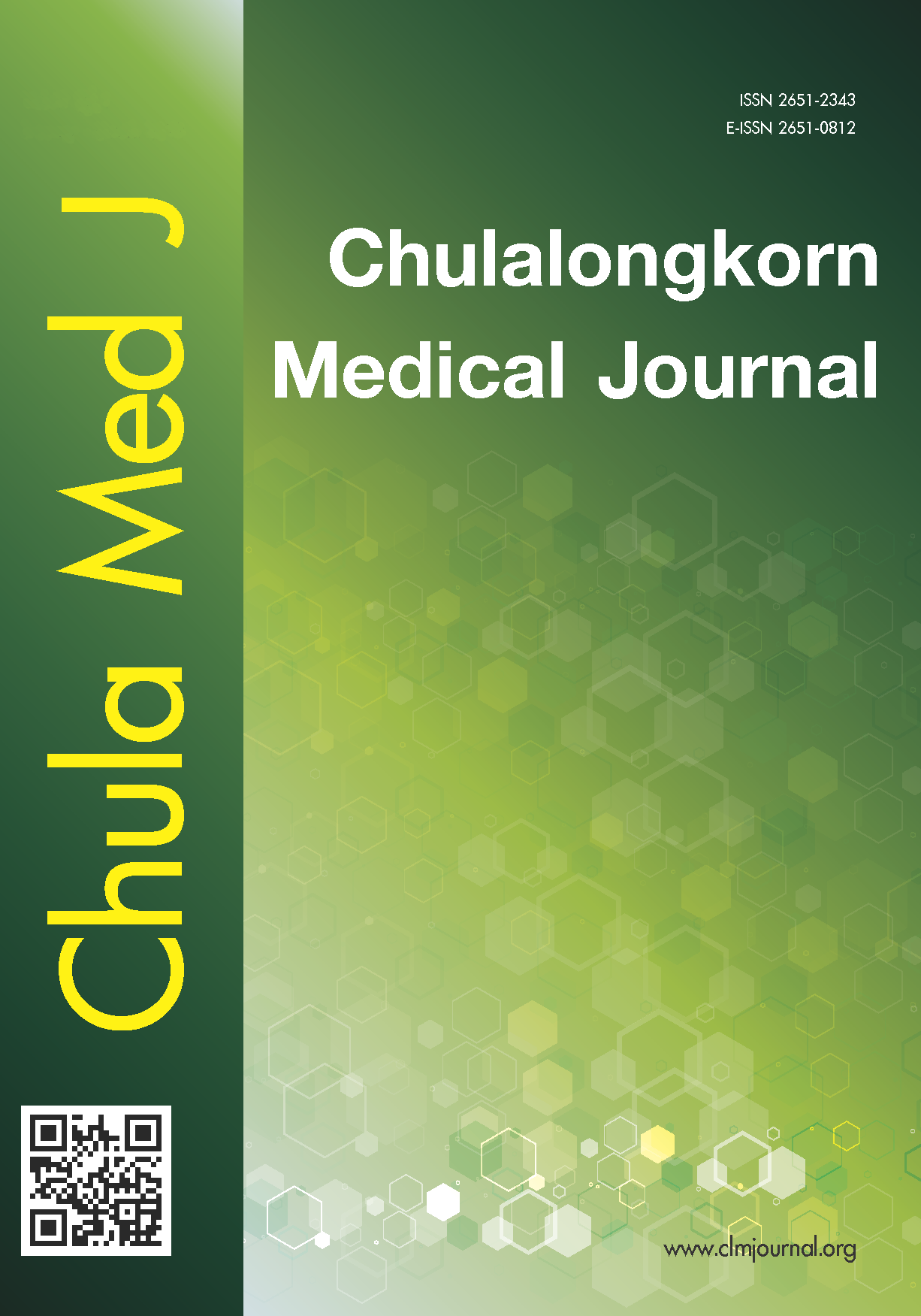Re-hospitalization following primary percutaneous coronary intervention in patients with ST-elevation myocardial infarction
Main Article Content
Abstract
Background: Re-hospitalizations (RHs) after primary percutaneous coronary intervention (primary PCI) in
ST-elevated myocardial infarction (STEMI) are not well studied in Thailand. We studied the frequency, causes,
and factors that might affect unplanned re-hospitalizations which may be helpful to predict and lead to better effective preventions.
Objectives: We aimed to investigate the frequency, causes, and factors that might affect unplanned rehospitalizations
Methods: We collected data from the Cardiac Center, King Chulalongkorn Memorial Hospital (KCMH) that
included all patients with STEMI who underwent primary PCI and followed them for 1 year after the intervention. Unpaired t - tests, Chi-squared tests, Fischer’s exact tests were utilized for data analysis with Kaplan-Meier curves regarding their first re-hospitalizations.
Results: The study included 96 patients with 15 unplanned RHs patients, 10 (11.36%) patients with unplanned
non-cardiac RHs and 5 (5.68%) patients with unplanned cardiac RHs. Only triglyceride levels were significantly
different between patients with unplanned cardiac RHs and patients without unplanned RHs.
Conclusion: Among the patients with STEMI that underwent primary PCI and followed-up at KCMH, noncardiac unplanned RHs occurred in 11.36% with various causes. While cardiac unplanned RHs occurred in
5.86% with non ST-elevated myocardial infarction (NSTEMI) as a leading cause.
